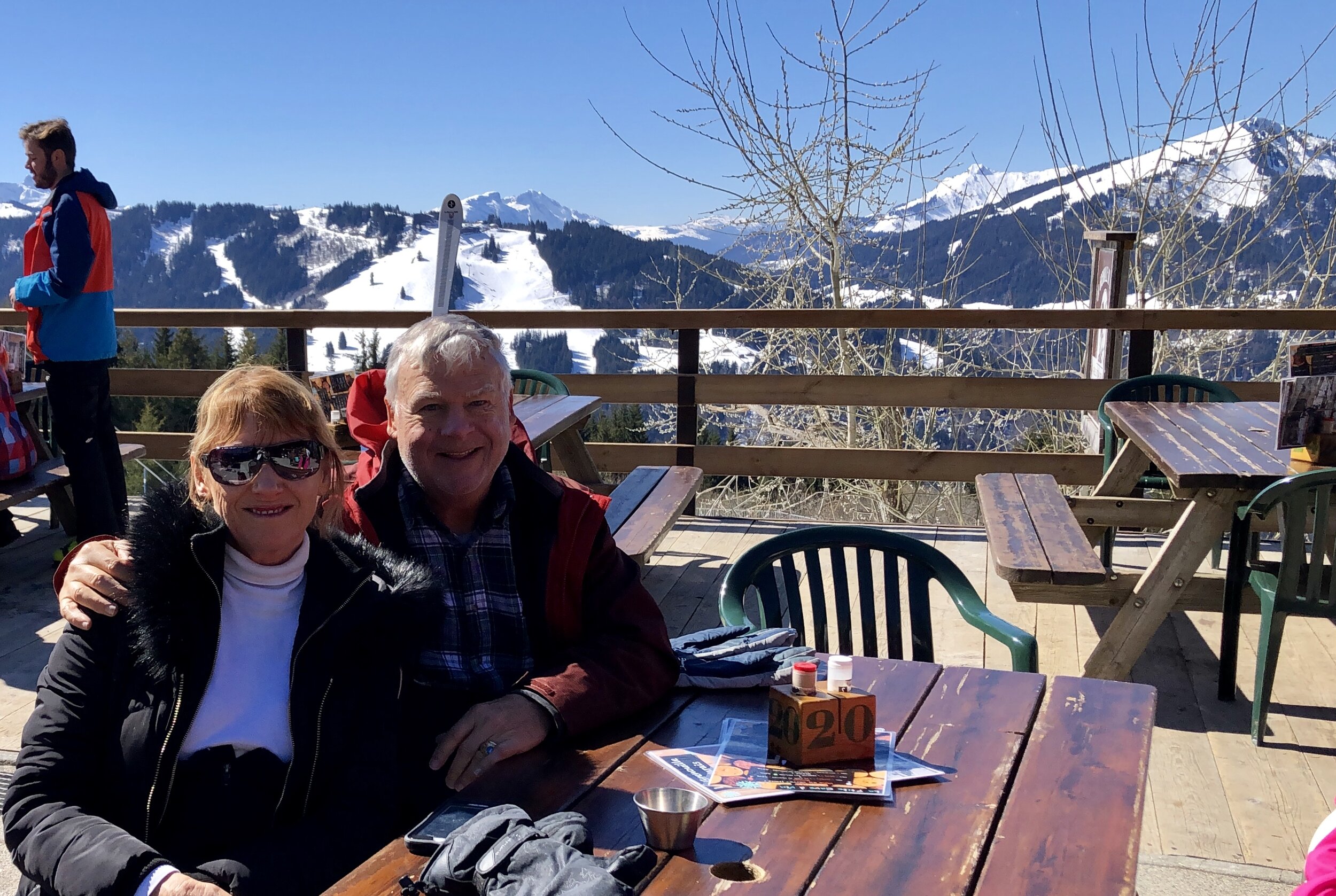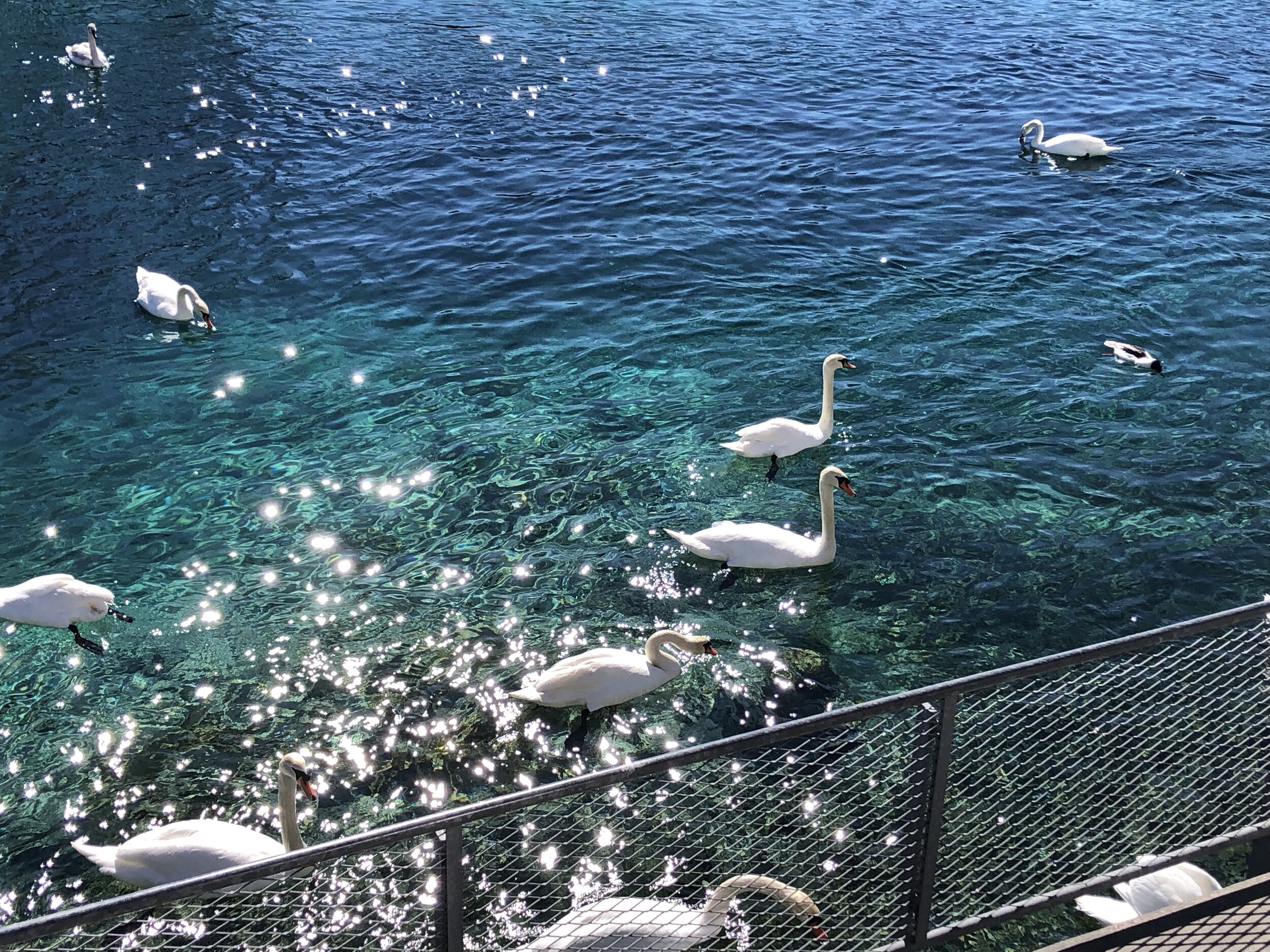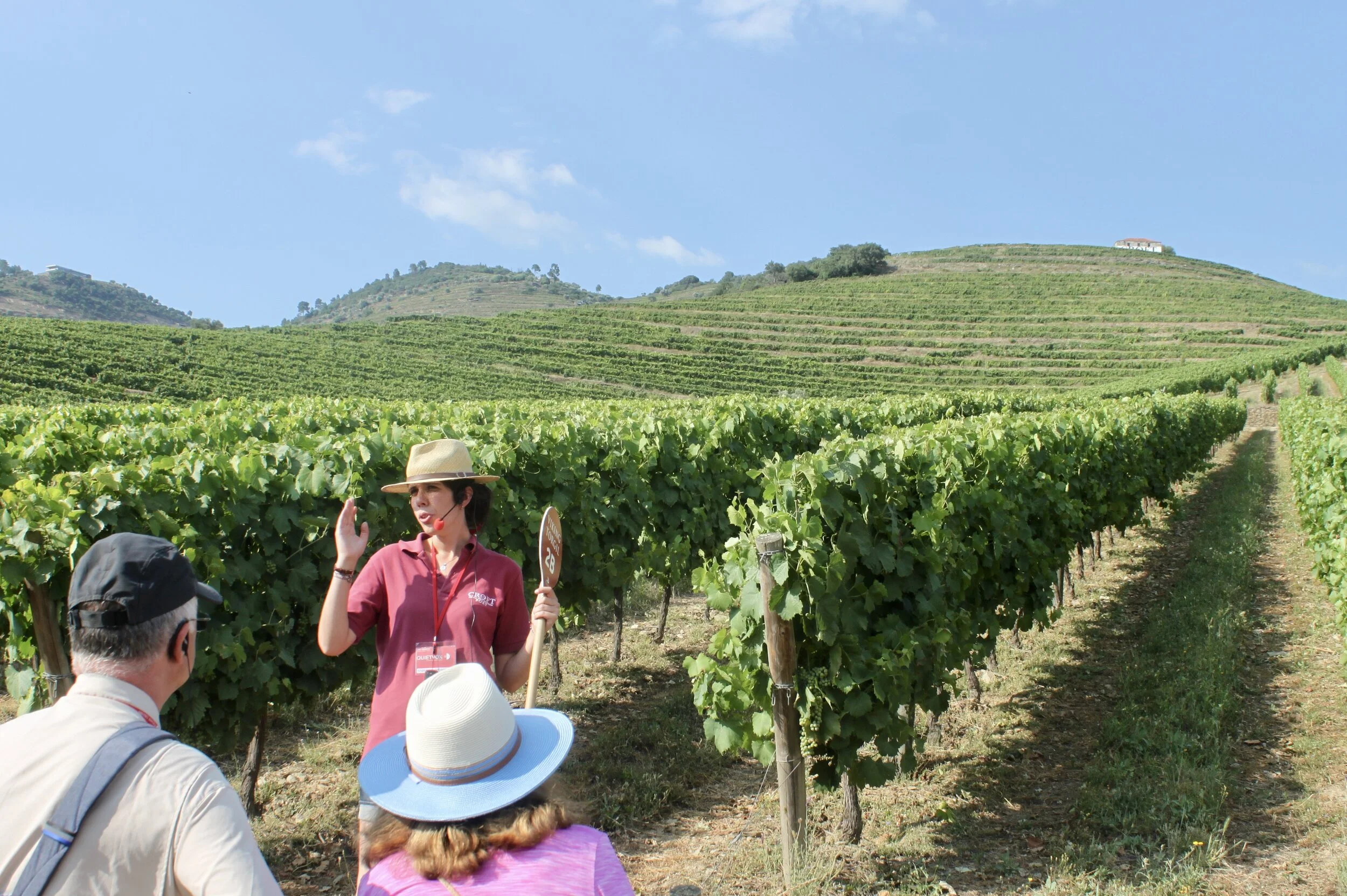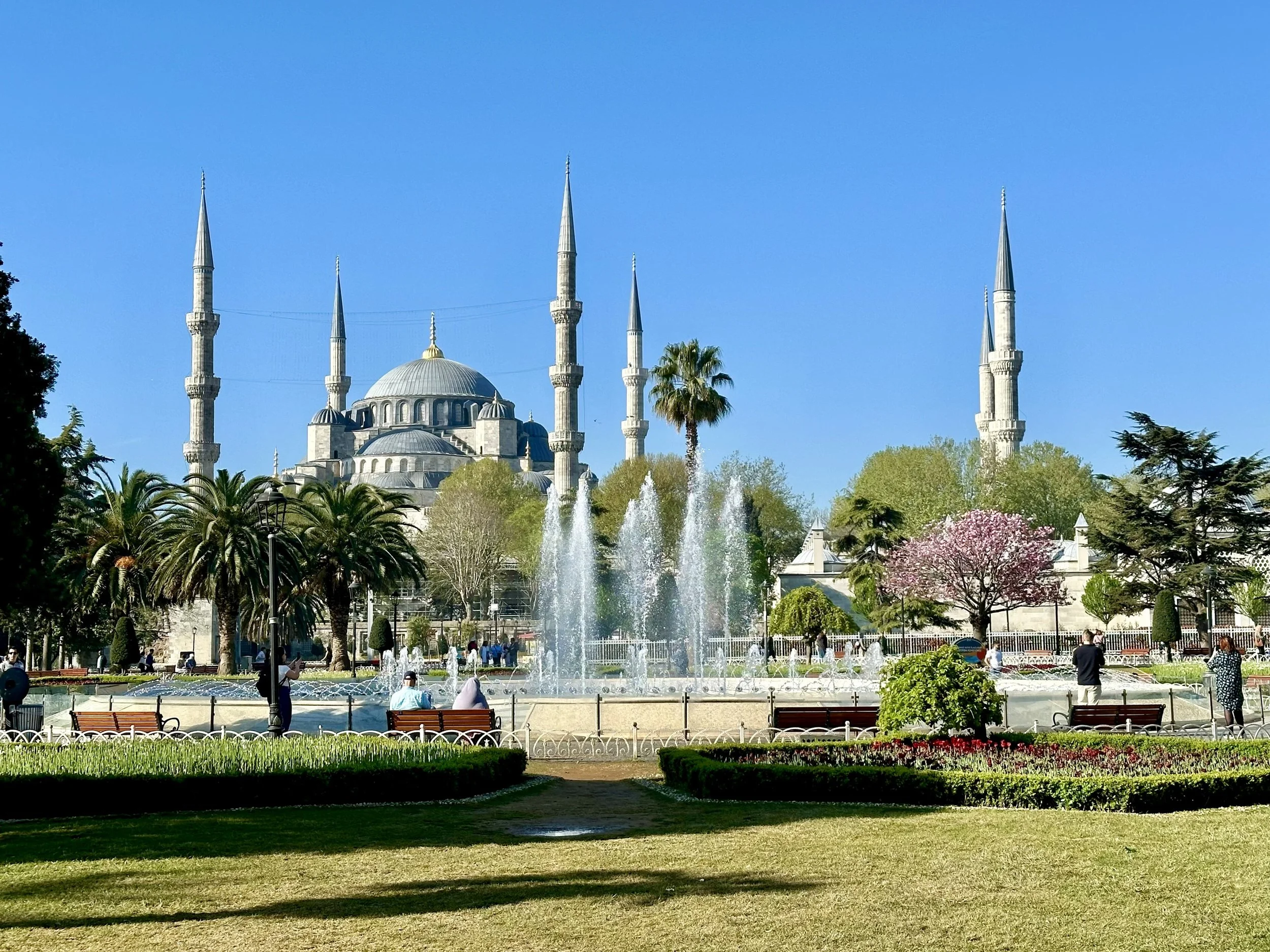Skiing in the Swiss Alps
For years we had an open invitation to join my wife’s cousin skiing in Europe. He is a German citizen and an avid traveler, and he knew we were skiing enthusiasts. We always dreamed about actually doing it, but there never seem to be the “perfect” time to go. We finally decided that last year was “The Year.”
Near Les Crosets, Switzerland
We really started planning the trip about a year in advance. We had just received an email from her cousin (we’ll call him Karl) with some amazing photos attached. It was their annual ski trip to Switzerland, and of course, our annual invitation to join them. After a short discussion, we realized we just had to commit to the idea. After all, what were we waiting for?
Advance Planning
We did some internet research on the region where Karl and his wife skied. The first impression we got was the immense size of the area. Unlike skiing in the United States, many European ski areas have numerous mountains all connected by a network of gondolas, chair lifts, poma lifts, and even rope tows. We were looking at a region called Portes du Soleil, an area spanning thousands of acres of skiable terrain and crossing the Swiss and French national boundaries. You could purchase an area Ski Pass (with a Seniors’ discount) which you could tailor to your specific needs and length of vacation.
The spectacular Alps
This trip was going to be a “big ticket” vacation, so I decided early on to plan and budget for a very comfortable and pricey lodge (which Karl had checked out for us), the ski passes for the trip, rental ski equipment for my wife and me, and of course, airfare and meals. Karl and his wife were staying in a small apartment which they had rented from the same family for 15 years. Unfortunately, there were no vacancies there during our trip dates. I looked into shipping our ski gear, but the hassle and the cost savings just weren’t worth it to me.
A midday break at mid-mountain
The first reservation we made was for our lodging. We decided on The Mountain Lodge in Les Crosets, Switzerland. As mentioned above, Karl made the initial inquires for us, and everything seemed right. We would be within walking distance of his apartment, and the lodge had wonderful facilities – a bar, a dining room, an indoor pool, sauna, a small movie theater, and a ski-in, ski-out location to a feeder lift. It even looked exactly how a ski chalet should look. We didn’t need to arrange rental gear or flights a year in advance, but the lodge books up early, so we made sure to lock in that part.
To get there we would need to fly into a major city nearby (most likely Geneva or Zurich) and take a train into a local village. We had a huge advantage with an experienced local “agent” in Karl. He was driving a car from Germany to the ski area, and he offered to meet us at the local train station once we arrived. So, I began looking at spending a few days upfront somewhere convenient in Europe – partly to explore a new area, and partly to allow time to adjust to jet lag from the transatlantic flight. Especially since we were embarking on a demanding ski holiday, I didn’t want us to show up already exhausted.
Lake Geneva shoreline
Finalizing Our Plans
The Ritz-Carlton Hotel de la Paix
We decided on Geneva as our initial stop in Europe. Neither my wife nor I had been there before, and it was a very convenient city for making the next leg of the trip to Portes du Soleil resort area. I used some Marriott Reward (now Bonvoy) Points to get us a reservation at The Ritz-Carlton Hotel de la Paix in Geneva. Yes, I was in pretty deep financially already, so a little luxury along the way seemed like the right thing to do. Karl had recommended a ski shop for equipment that was right in Les Crosets and easily assessable from our hotel and the slopes. It was Intersport Michel Sports Les Crosets, and I was able to book all our rental equipment online. The only big issue left was ski passes, but they were easy to purchase on site after we arrived.
Geneva skyline with Mont Blanc in the distance
Geneva
Our flight routing took us from Paris (short stopover) to Geneva, and we were tired when we arrived at the Geneva airport. Although I had researched trains and shuttle buses to downtown, we opted for a taxi to take us to our hotel. The priority was on ease and speed.
We had only stayed in a Ritz Carlton once before, and it was quite a treat. They are known for their customer service, and it’s easy to see why. The hotel was located downtown adjacent to Lake Geneva, and it was fully equipped to treat you right. We quickly got hooked on the coffee and chocolate that seemed to be everywhere. The hotel had a very nice casual restaurant as well as a second specialty restaurant (Fiskebar) featuring “Nordic fusion” cuisine. And naturally they had their own chocolate shop. Happily, we were within easy walking distance of the best parts of Geneva. We often walked along the banks of Lake Geneva and found plenty of places to eat, shop, or just people-watch. There were free ferries to shuttle you to different parts of the lake, and these boats gave you a great perspective on the entire city and lake.
A Lake Geneva ferry
We kept a pretty lazy schedule in Geneva as we slowly adapted to the local time zone. We did take part in a number of tourist activities, though; Geneva has plenty of interesting museums, churches, and historical sites to keep you busy. I found the Watch Museum (Musee de l’Horlogerie) particularly interesting; I wasn’t really looking forward to the visit, but it was quite interesting and educational.
Swans on Lake Geneva
A Scenic Train to Ski Country
When the time came to move on, we decided to walk the three blocks to the central train station. Our bags had wheels, the weather was mild, and we needed to work off some chocolate. Traveling by train in Europe always seems especially nice to me. They operate on schedule, they never seem too crowded, it’s a comfortable ride, not too expensive, and you can relax and watch some great scenery. Our train from Geneva to Bex (a small town which was our pick-up location) took us around the northern side of Lake Geneva. We got a great view of the lake, the city of Geneva, many Alpine mountains including Mont Blanc, and some charming Swiss villages in the mountains. Karl met us at the train station, and we were excited to see the area and catch up with our friends. We rode some winding roads through Swiss towns and farmlands climbing steadily to higher elevations and the small town of Les Crosets.
View of Lake Geneva from the train
Les Crosets
The town of Les Crosets is very small. Except for a few hotels and restaurants, the town consists mainly of ski-related activities (ski lifts, stores, and private homes.) The larger ski areas with much more infrastructure are a short distance across the border in France. In fact, when we started skiing in the mornings, our choice of lifts would either take us to France or keep us in Switzerland. It was fairly common to traverse back and forth throughout the day, although the area was so immense that you would need weeks to ski the entire region.
Near the entrance to The Mountain Lodge
We got settled in The Mountain Lodge and agreed to meet with our friends for dinner later. We immediately loved the place. As I said before, it looked as you imagined a Swiss ski lodge should. It started snowing after we arrived which just added to our excitement. We had a chance to explore the lodge and check out all it’s features. The bar and dining room had a very cozy feeling to it. We could already imagine enjoying a cold beer in front of the big fireplace after skiing. You could gaze out their huge windows to watch the sun setting over the Alps as the last skiers made their way downhill.
The view from our room.
Switzerland and Money
Maybe we should have been better informed, but we were very surprised at how expensive things were in Switzerland. This became obvious as soon as we landed in Geneva. Everything costs more across the board. We were especially conscious of this when we stopped while skiing; if we stopped in France to get lunch or a snack, it cost far less than the same meal in Switzerland. Sometimes the Swiss price was as much as twice the French price. We quickly realized it made sense to plan our breaks in France! When we went out for dinner we were usually walking to a restaurant in Les Crosets, so we couldn’t play that game. So, we “economized” during the day to “splurge” at night. Additionally, Switzerland has Swiss francs, while France has Euros; so, you need to carry both currencies. Luckily, nearly everyplace we patronized accepted credit cards, so we didn’t need to carry a lot of cash. Just make sure your credit card doesn’t charge currency exchange fees.
The Skiing
In a word, BREATHTAKING! I’m always impressed by snow covered mountains at any ski resort, but something about the Alps gives you pause. The vastness of the area is hard to believe. The mountains themselves are rugged, massive, and beautiful, and as the light conditions change during the day you get many different looks, all amazing.
Portes du Soleil ski area from the Swiss side
We felt as if we had two personal ski guides to show us the ropes. Karl and his wife (let’s call her Anna) were excellent skiers, and they had skied these mountains every year for the past 15 years. So, they knew how to plan our days so we wouldn’t be repeating anything, and so we wouldn’t be too many miles away from our return lifts at the day’s end. (In earlier years they learned that lesson the hard way.) They also knew how to avoid the crowded areas and dangerous spots, and they steered us to the most captivating scenery. The ski maps would have been pretty useless to us. The scale was hard to perceive; the size of the area was too large to adequately capture on a small map.
A clear day in the Alps
We logged many miles on the slopes during our ski trip. We normally started the day with a full breakfast at The Mountain Lodge around 7:30 am, followed by a rendezvous with our friends at one of the main ski lifts by 9 am. This gave us plenty of time to suit up, round up our boots and skis (at the hotel’s ski locker), and ski down to the short poma lift feeder to the larger chair lifts. We then put ourselves into the hands of our “guides.” Typically, we would ski from 9 to 12:30 or 1 pm before stopping for something to eat and drink. After a break we would take an easier pace and work our way back to our starting place. Because of the size and complexity of the area we always needed to have a plan for the day. Each day, after we finished skiing, Anna would mark up our ski map to show us where we had been that day. Sure enough, we were working our way around the entire ski region, although we were still just scratching the surface.
Near the peak on a cold, clear day
We ended up skiing nine out of ten days. I will admit I was thrilled on the day we had high winds and bad weather. I badly needed a rest, and I think everyone did. We took advantage of the hotel’s pool and sauna and even got an afternoon nap. That off day was just what the doctor ordered.
The Alps at midday
Holidays
Europe seems to celebrate a lot of holidays, and that usually means more crowded conditions on the ski slopes. If you go, investigate the major holidays that could affect you. School schedules are another issue to check out. Again, we were very lucky to have Anna and Karl on top of this; we scheduled our trip right after a major holiday, and it paid off for us.
Enjoying a great dinner at The Mountain Lodge.
Making the Trip Home
All good things come to an end, and this vacation was no exception. We were sorry to leave, but we had had all the skiing we could handle, great food, a lot of laughing, and memories we’ll treasure forever. Karl offered to drive us back to the Bex train station, and I was able to book us a train that would take us directly to the Geneva airport. We said our good-byes and headed home.
A small village not far from Les Crosets, Switzerland
We had a pleasant and uneventful train ride to the airport. Our flight from Geneva took us to Paris, and then back to the USA. Unfortunately, there was some serious delay landing in Paris, and we missed our connection home. We were told the problem was a system-wide computer glitch. Anyway, we were given hotel and meal vouchers by the airline, and we spent the night right outside the Charles De Gaulle airport. It was a bit annoying, and the accommodations were mediocre at best, but not a serious problem.
Some Lessons Learned
1. Switzerland is expensive. We were expecting to spend a lot on this vacation, but we were surprised at the difference between French and Swiss prices. As long as you know this going in, you can make your plans accordingly.
2. This might be a Bucket List trip worth the price. My wife and I love to ski, and we usually ski the Rockies, but a trip to a major ski resort in Europe is quite different. In the US we ski mountains; in European resorts they ski mountain ranges. The areas are much bigger but interconnected by a network of ski lifts. For a serious skier, it’s a Bucket List item.
Portes du Soleil ski area
3. Spend time planning your big trip. I mentioned the issue with school and European holidays; make sure to check that out. With advance planning and some flexibility you can save money in a lot of areas (airfares, promotions, etc.) If you qualify, ask for senior discounts. Europe seems to do a good job in that area. And, make sure your credit card does not charge for foreign currency exchanges.
4. Plan some cushion at both ends of the trip. Expect the unexpected. For me, it’s partly about the jet lag and getting acclimated to your new location. But delays happen (see my Viking River Cruise blog) and having a few extra days helps you roll with the punch.
5. Get in shape before skiing. This is especially important for us seniors. I got religious about hitting the gym and working on my legs and aerobic fitness prior to the trip. Thank Goodness. Skiing is always demanding, but we did a lot more skiing than we expected.
Ski buddies
6. Savor the experience! We may never take another ski trip like this one, but I have no regrets. It was more expensive than our usual domestic ski trip (airfare, lodging, rental equipment, ski passes, meals, and Swiss pricing,) but it was a Once-in-a-Lifetime experience. In retrospect, I’m glad I didn’t try to save a few bucks with a discount lodge, etc. Our accommodations, our meals, and our skiing experience were truly top shelf.
Sunset approaching































